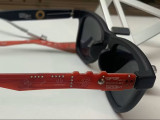An innovative and intuitive platform made for streamlining and forging meaningful connections between like-minded, influential, and invested partners in order to efficiently make real progress towards achieving the United Nations’ 17 Sustainable Development Goals for a better world.
Amsterdam Tech City => Global Tech City






Hi! I was looking for more information, but I've found some :) : http://www.meetup.com/Amsterdam-Tech-City/events/232427711/ .
Maybe good to update this page with a bit more information.